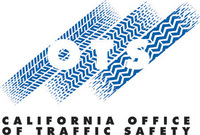Record Upsurge in State's Child Safety Seat Usage Marks Child Passenger Safety Week
 |
SACRAMENTO, Calif., Sept. 22, 2008 - The California Office of Traffic Safety released figures today which show a record setting rate of children riding in car safety seats. The 2008 rate of 94.4 percent of children under age five in child safety seats is a big jump of 6.7 percentage points over the 2007 rate of 87.7 percent.
The figures were released just in time to kick off the national Child Passenger Safety Week, September 21-27. These figures were part of the larger seat belt usage survey conducted by California State University, Fresno which recently showed a record 95.7 seat belt usage rate for adults.
"We are very happy to see that parents and caregivers in California are really seeing the need to get their kids in car seats," said Christopher J. Murphy, Director of the Office of Traffic Safety (OTS). "There is still a lot of work to do. We need to convince that last five percent that their child's life depends on that car seat and we also need to make sure all car seats are properly installed."
Research has shown that even when child safety seats are used, up to 90 percent are not installed properly. Improper installation can lead to a lessening of the protection such seats are designed to provide. When properly used, child restraint systems reduce fatalities by 71 percent for infants and 54 percent for toddlers in passenger cars. In 2007, 156 children age 15 and under died in car crashes.
During Child Passenger Safety Week, dozens of free car seat inspection clinics will be held across the state. Trained car seat technicians will show how to properly fit your child in the seats and the seats into your car. Parents and caregivers can contact their county public health department or their area California Highway Patrol office to find the free clinics nearest them. Reduced cost and free seats are often available at the clinics, which will continue throughout the year.
For maximum child passenger safety, OTS Director Murphy said parents and caregivers should refer to the following guidelines for determining which restraint system is best suited to protect children based on age and size:
1. For the best possible protection keep infants in the back seat, in rear-facing child safety seats, as long as possible up to the height or weight limit of the particular seat. At a minimum, keep infants rear-facing until at least age 1 and at least 20 pounds.
2. When children outgrow their rear-facing seats (at least age 1 and at least 20 pounds) they should ride in forward-facing child safety seats, in the back seat, until they reach the upper weight or height limit of the particular seat (usually around age 4 and 40 pounds).
3. Once children outgrow their forward-facing seats (usually around age 4 and 40 pounds), they should ride in booster seats, in the back seat, until the vehicle seat belts fit properly. Seat belts fit properly when the lap belt lays across the upper thighs and the shoulder belt fits across the chest (usually at age 8 or when they are 4'9" tall).
4. When children outgrow their booster seats, they can use the adult seat belts in the back seat, if they fit properly.


